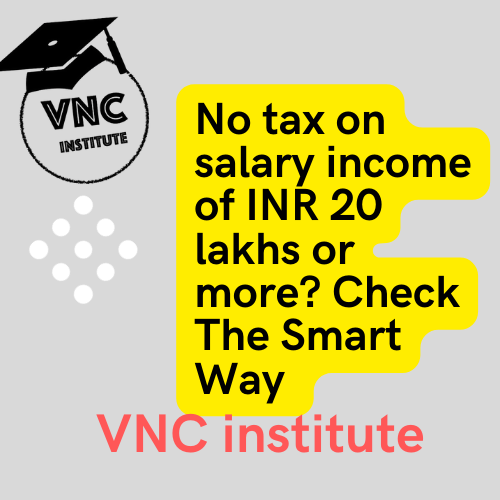The income tax provision applies to all persons who fall under the income tax category set by the government of India. Individuals with yearly income have an income tax slab starting at INR 5 lakh. There are various rules and deductions that may be used to save money on even the lowest income tax bracket.

Introduction
In this blog article, we will look at strategies to avoid income tax even if your salary exceeds the INR 20 lakh limit, which is considered a high-income bracket, and this CTC also attracts greater tax than the lower bracket. However, we will be conducting a full examination of this specific tax-saving approach and encourage that you read the entire piece.
We may assist you by reducing your tax due to zero even if your cost to the company (CTC) is Rs 20.41 lakhs per year for fiscal year 2021-22.

Suggestion
Suggestion for Making Income Tax Zero When Earning Rs 20.41 Lakhs Per Annum
- Include all of the tax-free components.
- HRA should ideally be 50% of the Basic Salary in order to receive the majority of the benefits of HRA (40 percent HRA if an individual has rented a house in a non-metro)
- In the event of automobile maintenance, the stated firm might reimburse up to Rs 1,800 per month for cars with less than 1600 CC (i.e. Rs 2,400 per month for larger cars) as well as Rs 900 per month for the driver’s wage as a tax-free allowance.

Employees may be able to contribute to both EPF and NPS.
Giving a firm a Gift Voucher of Rs 5000 every year on a birthday or anniversary is tax-free.
Cars acquired and owned by businesses give far higher tax benefits.
The Salary Structure’s Disadvantage It is discussed here.
There is, however, one disadvantage to the overall compensation system. The disadvantage is that the monthly payout will be lower. However, it is wiser to save more money for the future. At this point, it is best to paraphrase stock market tycoon Warren Buffett. “If you buy things you don’t need, you’ll quickly find yourself selling things you need.”
Salary Components Exempt from Tax
Coupons for Meals
Vehicle Upkeep
EPF (Contribution by Employer)
NPS (Contribution by Employer)
Gift certificate
The Internet and mobile phones Reimbursement of Bills
Allowance for Newspaper/Journal
Education/Hostel Allowance for Children
Allowance for Leave Travel
Children’s Education Uniform Allowance/Hostel Allowance

Takeaways Regarding Tax Deductions
Individuals may receive the following tax breaks:
- Section 80CCD(1B) (Rs 50,000): NPS Investment (Should you invest Rs 50,000 in NPS to save tax under Section 80CCD (1B)?)
- Section 80C/80CCC/80CCD (Rs 1,50,000): EPF, PPF, Pension Plans, ELSS, FD, NPS, NSC, SCSS, Life Insurance, SSA, and NPS. Tuition fees, home loan principal repayment, and stamp duty are all included (The Best Tax Saving Investments under section 80C)
- Section 80E: Interest on an Education Loan. There are no upper or lower bounds! (Tax Break on Education Loans (Section 80E))
- Section 24: The interest paid on the self-occupied house loan. There is no limit for the rented dwelling.
Section 80D: The payment of a premium for a person’s and his parents’ medical insurance. It also contains a Rs 5,000 cap for preventative health checkups (Thus Making Sense of the Tax Benefit on the Health Insurance under section 80D)
For Salaried Person there are very less options in saving tax . One should be smart while doing this.
